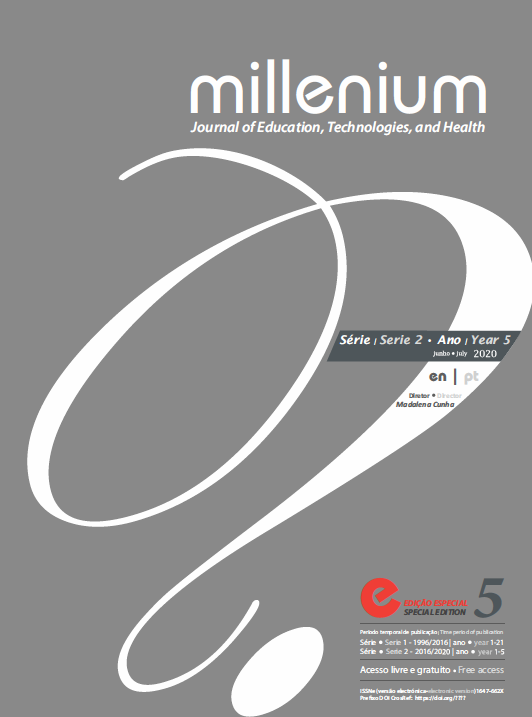Tabloidization in the portuguese generalist daily newspapers
DOI:
https://doi.org/10.29352/mill0205e.06.00317Keywords:
tabloidization, light news, hard news, newspapers, informationAbstract
Introduction: The phenomenon of media tabloidization, based on the predominance of light news, increase of the visual and hyper-concurrence, is more pronounced in face of the economic pressures surrounding the media sector.
Objetives: To evaluate the front pages of the four Portuguese generalist daily newspapers during a year, in order to understand whether the formal characteristics of tabloidization have any expression in these periodicals.
Methods: Through a direct analysis of 54 covers of each diary, and based on the scheme proposed by Colin Sparks (2000), we quantified the number of news and imagens on the front pages and categorized them in terms of the focus (public or private) and the theme (light or hard).
Results: We concluded that Correio da Manhã and Jornal de Notícias are the press titles in which the singularities of the tabloidization phenomenon are most visible. On the contrary, Jornal i and Público are the newspapers with the least signs of tabloidization.
Conclusions: Tabloidization is more visible in the two generalist daily newspapers that are market leaders, which confirms the idea that argues that the journalistic treatment of lighter themes may be a way to overcome the economic media crisis.
Downloads
References
APCT, Boletim Informativo (Jan/Dez 2019). Acedido em http://www.apct.pt/analise-simples.
Bird, S. E. (2009). “Tabloidization: What is it, and does ir really matter?”. In Zelizer, B. (ed.) The Changing Faces of Journalism: Tabloidization, Technology and Truthiness. Routledge, pp. 40-50.
Boorstin, D. J. (2006) “From hero to celebrity: the human pseudo event”. In Marshal, P.D. (ed), The celebrity culture reader. New York and London, Routledge, pp. 72-90.
Brin, C., Charron, J., & Bonville, J. (2004) “Introduction”. In Collete, B., Charron, J. e Bonville, J. (eds) Nature et transformation du journalisme: théorie et researchs empiriques. Laval, Les Presses Universitaires de Laval, pp. 1-33.
Cashmore, E. (2006) Celebrity / culture. Nova Iorque, Routledge.
Charron, J., & Bonville, J. (2004) “Le journalisme et le marché: de la concurrence à l’hiperconcurrance”. In Collete, B., Charron, J. e Bonville, J. (eds) Nature et transformation du journalisme: théorie et researchs empiriques. Laval, Les Presses Universitaires de Laval, pp. 292-293.
Conboy, M. (2011) “Celebridade na cultura tablóide britânica”. In Cintra Torres, E. e Zúquete, J. P. (orgs.) A vida como um filme: fama e celebridade no século XXI. Alfragide, Texto Editores, pp. 123-148.
Cornu, D. (1994) Jornalismo e verdade: para uma ética da informação. Lisboa, Instituto Piaget.
Hartley, J. (2004) Comunicação, estudos culturais e media. Lisboa, Quimera. MacDonald, M. (2003) Exploring media discourse. Nova Iorque, Oxford University Press.
Marshall, P. D. (2006) “Intimately interwined in the most public way: celebrity and journalism”. In Marshall, P. D. (ed), The celebrity culture reader. Nova Iorque e Londres, Routledge, pp. 315-323.
Mota, J. (2017) “A Morte na Imprensa. A evolução no tratamento mediático da morte de figuras públicas”. (Tese de doutoramento, Universidade de Coimbra).
Patterson, T. E. (2003) “Tendências do jornalismo contemporâneo: estarão as notícias leves e o jornalismo crítico a enfraquecer a democracia?”. Media & Jornalismo, 2, pp. 19-47.
Quintanilha, T. L. (2018) “2029 – o fim dos jornais em papel em Portugal? Um estudo longitudinal sobre os principais indicadores de desempenho no sector da imprensa escrita tradicional portuguesa”. Observatório, pp. 138-155.
Rowe, D. (2010) “Tabloidization of news”. In Allan. S. (ed) The routledge companion to news and journalism. Oxon, Routledge, pp. 350-361. Rowe, D. (2000) “On going tabloid: a preliminary analysis”. Metro, 121/122, pp. 78-85.
Sparks, C. (2000) “Introduction: the panic over tabloid news”. In Sparks, C. e Tulloch, J. (eds) Tabloid tales: global debates over media standards. Oxford, Rowman & Littlefield Publishers, pp. 1-40.
Thompson, J. (2008) “A Nova Visibilidade”. Matrizes, pp. 15-38.
Turner, G. (2006a) “Celebrity, the tabloid and the democratic public sphere”. In Marshal, P.D. (ed) The celebrity culture reader. Nova Iorque e Londres, Routledge, pp. 487-500.
Turner, G. (2006b) “The mass production of celebrity: celetoids, reality tv and the demotic turn”. International Journal of Cultural Studies, 9(2), pp. 153-165.
Turner, G. (2004) Understanding celebrity. London, Sage Publications.
Vargas Llosa, M. (2013) A civilização do espetáculo. Quetzal, Lisboa.
Downloads
Published
How to Cite
Issue
Section
License
Authors who submit proposals for this journal agree to the following terms:
a) Articles are published under the Licença Creative Commons (CC BY 4.0), in full open-access, without any cost or fees of any kind to the author or the reader;
b) The authors retain copyright and grant the journal right of first publication, allowing the free sharing of work, provided it is correctly attributed the authorship and initial publication in this journal;
c) The authors are permitted to take on additional contracts separately for non-exclusive distribution of the version of the work published in this journal (eg, post it to an institutional repository or as a book), with an acknowledgment of its initial publication in this journal;
d) Authors are permitted and encouraged to publish and distribute their work online (eg, in institutional repositories or on their website) as it can lead to productive exchanges, as well as increase the impact and citation of published work
Documents required for submission
Article template (Editable format)





